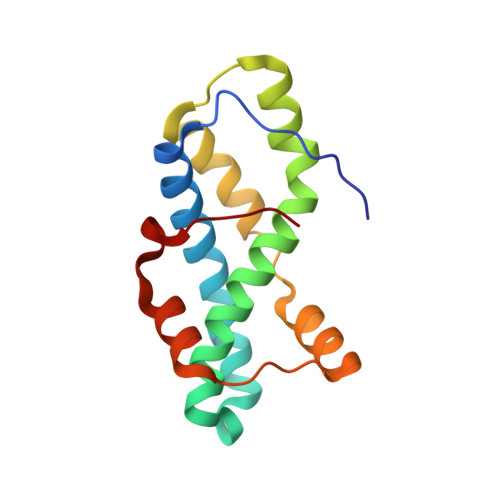Solution structure of sperm lysin yields novel insights into molecular dynamics of rapid protein evolution.
Wilburn, D.B., Tuttle, L.M., Klevit, R.E., Swanson, W.J.(2018) Proc Natl Acad Sci U S A 115: 1310-1315
- PubMed: 29348201
- DOI: https://doi.org/10.1073/pnas.1709061115
- Primary Citation of Related Structures:
5UTG - PubMed Abstract:
Protein evolution is driven by the sum of different physiochemical and genetic processes that usually results in strong purifying selection to maintain biochemical functions. However, proteins that are part of systems under arms race dynamics often evolve at unparalleled rates that can produce atypical biochemical properties. In the marine mollusk abalone, lysin and vitelline envelope receptor for lysin (VERL) are a pair of rapidly coevolving proteins that are essential for species-specific interactions between sperm and egg. Despite extensive biochemical characterization of lysin-including crystal structures of multiple orthologs-it was unclear how sites under positive selection may facilitate recognition of VERL. Using a combination of targeted mutagenesis and multidimensional NMR, we present a high-definition solution structure of sperm lysin from red abalone ( Haliotis rufescens ). Unapparent from the crystallography data, multiple NMR-based analyses conducted in solution reveal clustering of the N and C termini to form a nexus of 13 positively selected sites that constitute a VERL binding interface. Evolutionary rate was found to be a significant predictor of backbone flexibility, which may be critical for lysin bioactivity and/or accelerated evolution. Flexible, rapidly evolving segments that constitute the VERL binding interface were also the most distorted regions of the crystal structure relative to what was observed in solution. While lysin has been the subject of extensive biochemical and evolutionary analyses for more than 30 years, this study highlights the enhanced insights gained from applying NMR approaches to rapidly evolving proteins.
Organizational Affiliation:
Department of Genome Sciences, University of Washington, Seattle, WA 98195; dwilburn@u.washington.edu.














